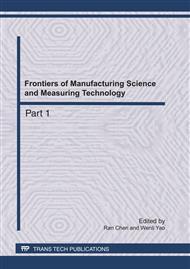p.1
p.7
p.12
p.16
p.21
p.26
p.31
p.35
p.40
Method to Analyze Chemo-Mechanical Behavior of Shape Memory Polymer in Response to Solvent
Abstract:
Thermo-responsive shape-memory polymer (SMP) has been experimentally demonstrated that shape recovery can be induced by plasticizing solvent. Subject to being immersed into solvent, deformed SMP recover from the temporary shape to original shape, leading to shape recovery induced by the molecular interaction. The actuation of styrene-based SMP has been carried out by electrostatic dipole-dipole interaction and physical swelling effect, respectively. The model can be used to predict the effect of prestress, strain, volume change and chemical potential on SMP actuation in the solvent. Finally, it is found that the simulation agrees well with experimental results. The authors show that the chemo-mechanical instability occurs when the Hessian of the free-energy function ceases to the positive definite. Their calculations show that the shape recovery behavior of SMP is driven by the entropy change markedly, agreeing with existing experimental observations.
Info:
Periodical:
Pages:
21-25
Citation:
Online since:
May 2011
Authors:
Price:
Сopyright:
© 2011 Trans Tech Publications Ltd. All Rights Reserved
Share:
Citation:


